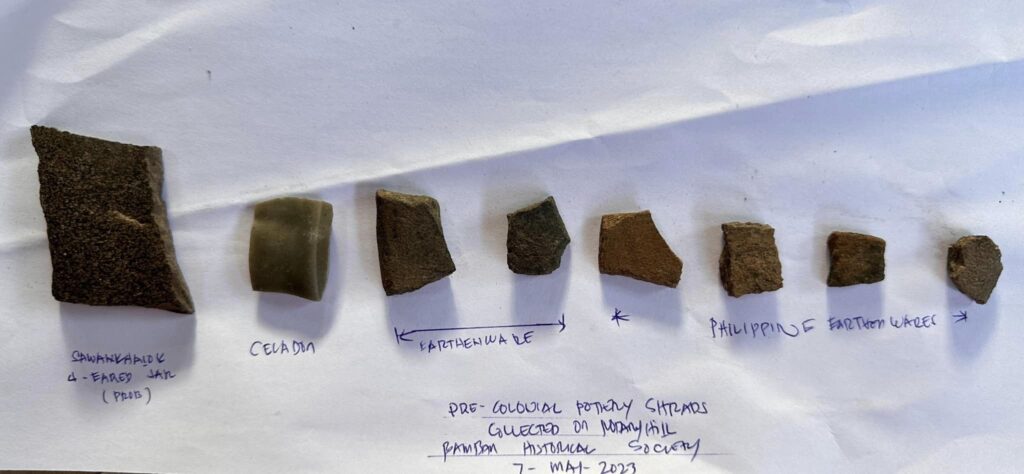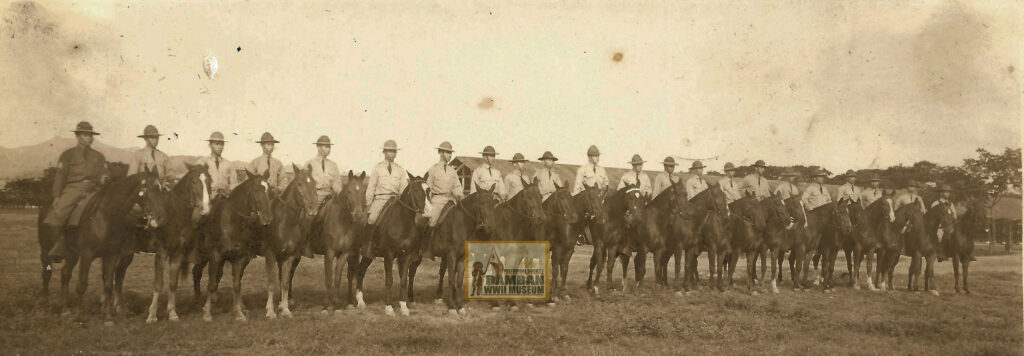
INVESTIGATING HISTORY THROUGH PHOTOGRAPH:
THE CAVALRY SQUADRON, PHILIPPINE ARMY:A BRIEF HISTORICAL SKETCH
Little is known about the cavalry of the Philippine Army, its early organizational unit that had fought during the Philippine-American War until prior the outbreak of WWII. Although, there were many Filipinos who joined the 26th Cavalry Philippine Scouts and stationed at nearby Fort Stotsenburg, and this unit is considered as a cavalry unit of the U.S. Army based in the Philippines, there was one cavalry unit that fought against the Americans in 1899 at the height of the Philippine-American War.
This was the cavalry unit of the Mascardo Brigade, under Major Pedro Salvador, operating in Pampanga, in the towns of Bacolor, Sta. Rita, Guagua, Lubao, and in Porac, where the latter became the headquarters of General Mascardo of the brigade.
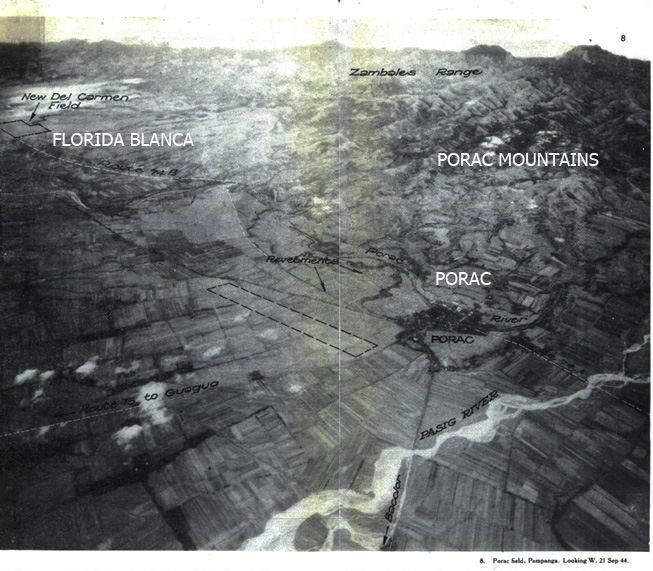
Filipino and American cavalry forces happened on the hills behind the poblacion,
on November 2, 1899.
Most notable of Major Salvador and his cavalry was in Guagua, on October 4, 1899, where he led a contingent of 25-men on a guerrilla attack on American outpost. The last quarter of 1899 was the height of the epic battles of the Philippine-American War in Pampanga.
On October 29, 1899, Major Salvador of the cavalry under the Mascardo Brigade made the last stand in the outskirts of Lubao, as reinforcements for the Filipino attack on the Americans holed at the church. Major Bishop, reinforcing the beleaguered American troops inside the church, made a direct contact with Major Salvador, the latter disposing his troops at the outskirts in engagement on the Americans and made the last stand, where 4 officers and 8 men were killed in the fight, including Major Salvador. The Americans suffered 2 killed and 7 wounded, including Captain Charles French, where he died in these fiercest fights with the Filipinos under Major Salvador.
The remains of the cavalry squadron of Major Salvador continued to operate in the northwest and south of Pampanga, while the main body of the Mascardo Brigade holed in Porac. With the final movement of the Americans in the area under Major Bell of the 36th U.S. Infantry (Volunteers) by the last quarter of 1899, Mascardo Brigade, including the cavalry squadron, holed at the back of the town of Porac, at Jalung and on the hills.
In the last battle engagement at Porac on November 2, 1899, the fight ensued between Major Bell’s 36th U.S. Infantry (Volunteers) and the horse-mounted troop scouts led by 1st Lieutenant Slavens, along with the American cavalry from the Troop E and K, 4th U.S. Cavalry. It was at the Babo Pangulu, where both the cavalry from the Mascardo’s cavalry squadron and Lieutenant Slavens’ mounted scouts and Troop E, fought in the last stand of the Filipino at Porac.
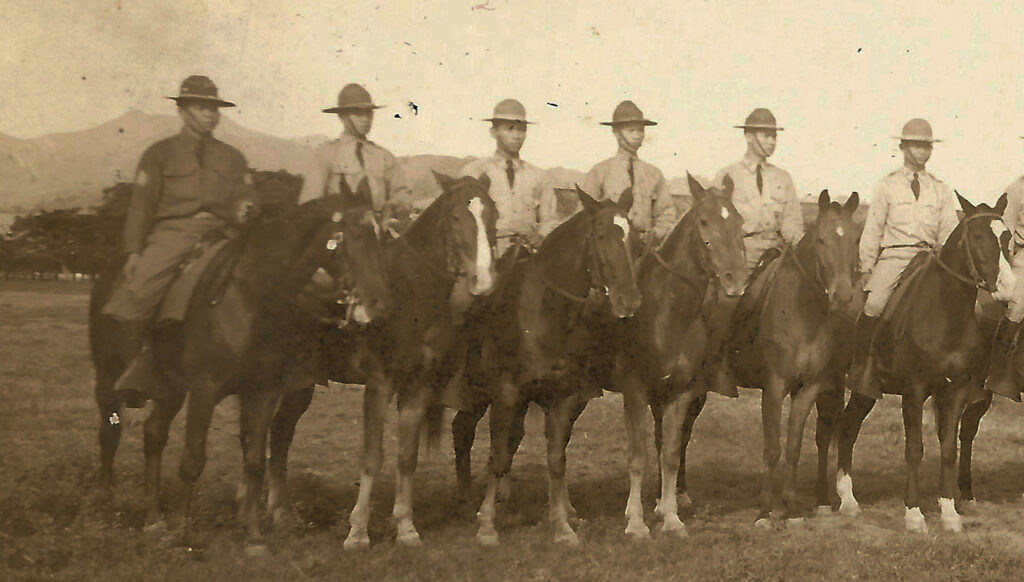
Pacifico Marin Collection
The two photographs represent rare images of the Filipino cavalry. These photos were part of the collection of Captain Pacifico Marin, a Kapampangan soldier from San Fernando who fought during WWII. They became available with the approval of the daughter of the veteran. These represents part of the Pacifico Marin WWII Collection, now in display at the Bamban WWII Museum.
The first image shows a group of officers and men in a formal set-up for a unit photograph, obviously taken at Fort Stotsenburg, written with the following:
“Cavalry Squadron, Philippine Army (P.A.)
Fort Stotsenburg
October 30, 1936″
Some of the officers are numbered for identification:
“1. Cat. (Capt.) Sulit; 2. Capt. Pitts; 3. Mio (?) Nieto
In-depth research will be taken to ascertain this unit of the cavalry in the Philippine Army before the outbreak of the war, or during the Philippine Army organization in the aftermath of the National Defense Act of 1935 creating the Philippine Army. Was this Filipino cavalry integrated into the fighting force during WWII?
Looking at the photograph, it might be possible that the location was in the vicinity of the Parade Ground, on the west side, where the 26th Cavalry Regiment facilities were established inside Fort Stotsenburg.
The second photograph shows the Philippine Army cavalry squadron, in formation, probably near the Parade Ground, with the Zambales Mountain range at the background. These images provide vivid description of the Filipino cavalry, taken at the Stotsenburg prior the brewing of the war.
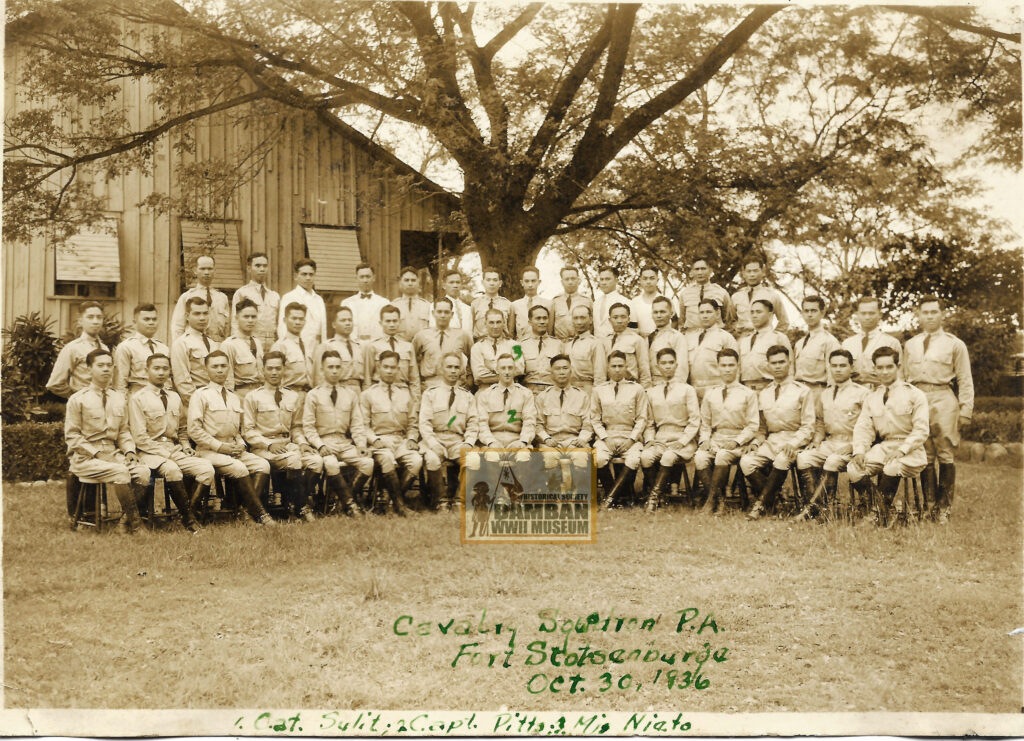
Pacifico Marin Collection.
Our sincere thanks to Madame Sylvia Dayrit and Robert Pecson for giving us the opportunity to avail the collection of Pacifico Marin, including this Filipino cavalry.

